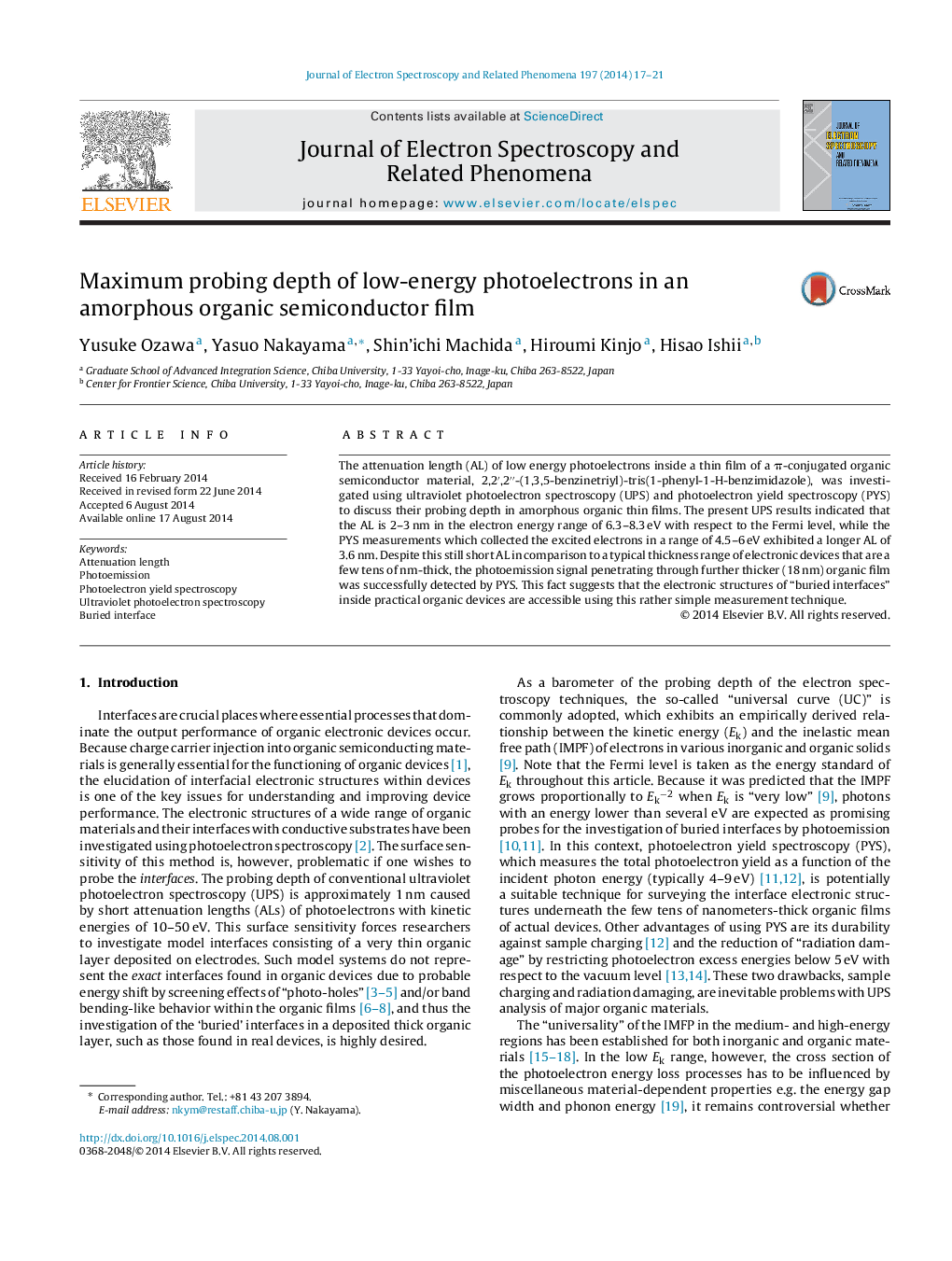| Article ID | Journal | Published Year | Pages | File Type |
|---|---|---|---|---|
| 5395889 | Journal of Electron Spectroscopy and Related Phenomena | 2014 | 5 Pages |
Abstract
The attenuation length (AL) of low energy photoelectrons inside a thin film of a Ï-conjugated organic semiconductor material, 2,2â²,2â³-(1,3,5-benzinetriyl)-tris(1-phenyl-1-H-benzimidazole), was investigated using ultraviolet photoelectron spectroscopy (UPS) and photoelectron yield spectroscopy (PYS) to discuss their probing depth in amorphous organic thin films. The present UPS results indicated that the AL is 2-3Â nm in the electron energy range of 6.3-8.3Â eV with respect to the Fermi level, while the PYS measurements which collected the excited electrons in a range of 4.5-6Â eV exhibited a longer AL of 3.6Â nm. Despite this still short AL in comparison to a typical thickness range of electronic devices that are a few tens of nm-thick, the photoemission signal penetrating through further thicker (18Â nm) organic film was successfully detected by PYS. This fact suggests that the electronic structures of “buried interfaces” inside practical organic devices are accessible using this rather simple measurement technique.
Keywords
Related Topics
Physical Sciences and Engineering
Chemistry
Physical and Theoretical Chemistry
Authors
Yusuke Ozawa, Yasuo Nakayama, Shin'ichi Machida, Hiroumi Kinjo, Hisao Ishii,
